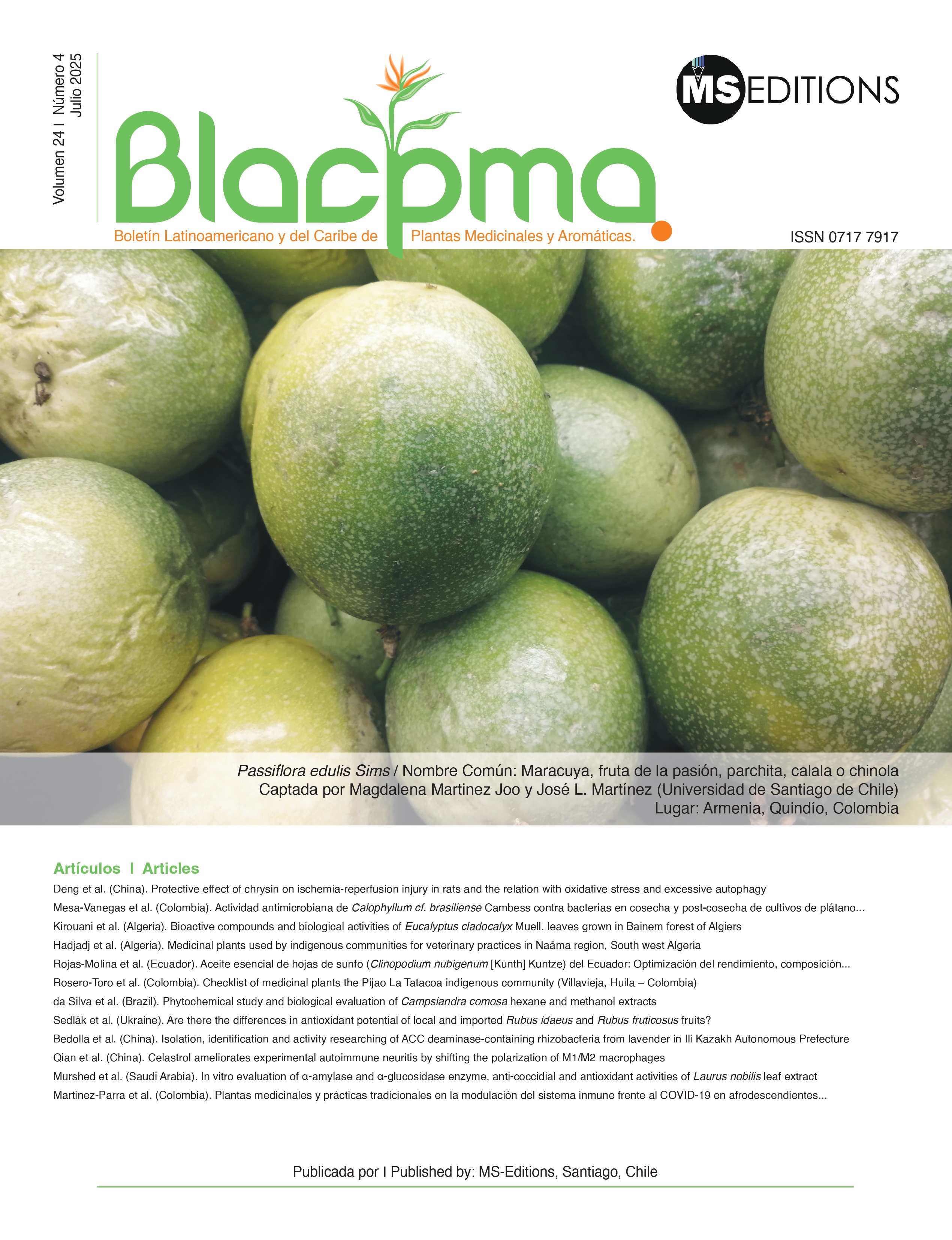Checklist of medicinal plants the Pijao La Tatacoa indigenous community (Villavieja, Huila – Colombia)
DOI:
https://doi.org/10.37360/blacpma.25.24.4.40Keywords:
Cultural significance, Ethnobotanical dataset, Tropical dry forest, Ethnomedicine, Medicinal useAbstract
Ethnomedicine is essential for indigenous communities, especially those living in dry ecosystems, such as the Pijao La Tatacoa Indigenous People (Huila, Colombia), with whom the first ethnomedical list was co-constructed. For the study, 33 participants were recruited for a semi-structured interview and an ethnobotanical walk. The floristic data revealed 107 species with medicinal uses. The most representative family was Fabaceae (10 genera, 10 species), typical of the tropical dry forest, and prioritized due to the diversity of ethnomedical uses obtained. Regarding ethnomedicine, 14 categories and 71 ailments were identified, reflecting the healing role of the ethnoflora, as well as the preference for cultivated species (53%) and wild species (40%) present in the territory. Finally, the biological data are stored in the SiB Colombia and the GBIF, strengthening knowledge about the ethnoflora of the dry ecosystem. Additionally, this provides a resource for indigenous communities and decision-makers to preserve the territory and its culturally important species.
Downloads
Downloads
Published
How to Cite
Issue
Section
License

This work is licensed under a Creative Commons Attribution-NonCommercial-NoDerivatives 4.0 International License.

